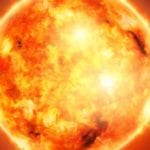 Weird Stuff
Weird Stuff  Weird Stuff
Weird Stuff  Mysteries
Mysteries 10 Tragic Disappearances and Deaths in Joshua Tree National Park
 History
History 10 Ways Childhood Really Sucked in the Old West
 Music
Music 10 Name Origins of Famous Bands from the 1990s
 Religion
Religion 10 Biggest Turnarounds by the Catholic Church
 Weird Stuff
Weird Stuff 10 Unbelievable Times Laws Had Unintended Consequences
 Humans
Humans Ten Historic Women Who Deserve Way More Credit Than They Got
 Movies and TV
Movies and TV 10 Films That Spawned Major Lawsuits
 History
History Ten Times Towns Were Wiped Off the Face of the Earth
 Creepy
Creepy 10 of the Most Disturbingly Haunted Public Houses in the UK
 Weird Stuff
Weird Stuff 10 Niche Subcultures That Are More Popular Than You Might Think
 Mysteries
Mysteries 10 Tragic Disappearances and Deaths in Joshua Tree National Park
 History
History 10 Ways Childhood Really Sucked in the Old West
Who's Behind Listverse?

Jamie Frater
Head Editor
Jamie founded Listverse due to an insatiable desire to share fascinating, obscure, and bizarre facts. He has been a guest speaker on numerous national radio and television stations and is a five time published author.
More About Us Music
Music 10 Name Origins of Famous Bands from the 1990s
 Religion
Religion 10 Biggest Turnarounds by the Catholic Church
 Weird Stuff
Weird Stuff 10 Unbelievable Times Laws Had Unintended Consequences
 Humans
Humans Ten Historic Women Who Deserve Way More Credit Than They Got
 Movies and TV
Movies and TV 10 Films That Spawned Major Lawsuits
 History
History Ten Times Towns Were Wiped Off the Face of the Earth
 Creepy
Creepy 10 of the Most Disturbingly Haunted Public Houses in the UK
10 Solar System Mysteries That Still Puzzle Our Best Scientists
Despite all the information we’ve discovered from our telescopes and outer space missions, there are still many puzzles to solve in our own solar system. Sometimes, it seems the more we learn, the more mysteries we uncover.
10The Invisible Shield Surrounding Earth

In 1958, James Van Allen from the University of Iowa discovered a pair of radiation belts, an inner and an outer doughnut-shaped ring up to 40,000 kilometers (25,000 mi) above Earth containing high-energy electrons and protons. Earth’s magnetic field holds these radiation belts in place, but they shrink and swell as needed to respond to the Sun’s ejections of energy in our direction.
In 2013, Daniel Baker of the University of Colorado discovered a third structure between the inner and outer Van Allen radiation belts. Baker characterized this structure as a “storage ring” that comes and goes like raising or lowering an invisible shield as needed to block the effect of “killer electrons.” These electrons, which can be dangerous to both astronauts and satellite equipment, dart around Earth at over 16,000 kilometers (100,000 mi) per second when we have severe solar storms.
At an altitude of a little over 11,000 kilometers (7,000 mi), a sharp boundary forms a type of inner edge on the outer radiation belt, blocking these electrons from penetrating deeper into our atmosphere.
“It’s almost like these electrons are running into a glass wall in space,” said Baker. “Somewhat like the shields created by force fields on Star Trek that were used to repel alien weapons, we are seeing an invisible shield blocking these electrons. It’s an extremely puzzling phenomenon.”
Scientists have developed several theories to explain this shield. But so far, none of them work completely.
9The Flyby Anomaly

Since we started exploring space, our spacecraft have executed flyby maneuvers to use the gravitational energy from a planet or moon to give them a speed boost as they travel into space. These flybys are used on a regular basis to fling satellites deeper into the solar system. But scientists can’t seem to estimate these speeds correctly on a consistent basis. There’s often a tiny, unexplained variation in speed that’s been dubbed the “flyby anomaly.”
We only have the monitoring equipment to detect the precise difference in speeds on flybys of Earth. The anomaly has ranged from a speed decrease of 2 millimeters (0.08 in) per second with NASA’s Cassini in 1999 to a speed boost of 13 millimeters (0.5 in) per second with NASA’s NEAR asteroid spacecraft in 1998.
“These deviations do not seriously affect the trajectories of the spacecrafts,” said Luis Acedo Rodriguez, a physicist at the Polytechnic University of Valencia. “Yet, although they are seemingly small amounts, it is very important to clarify what they are caused by, especially in the current era of precise space exploration.”
Scientists have proposed several causes, from solar radiation to dark matter trapped by our planet’s gravity. But it remains a mystery.
8Jupiter’s Great Red Spot

Jupiter’s Great Red Spot has produced at least two ongoing mysteries. The first is how this Energizer Bunny of a cyclone keeps going and going and going. It’s a massive storm wide enough to contain at least two Earths. “Based on current theories, the Great Red Spot should have disappeared after several decades,” said Pedram Hassanzadeh of Harvard University. “Instead, it has been there for hundreds of years.”
There are several theories to explain its longevity. One is that the Red Spot vortex absorbs smaller vortices over time to gain energy. Hassanzadeh proposed another in late 2013—the vertical flow in the vortex moves both cold gases up from the bottom and hot gases down from the top to renew some of the energy in the center of the vortex. But no theory completely solves this puzzle.
The second mystery of the Great Red Spot is the source of its striking coloring. One theory says that the red coloring is caused by chemicals that form beneath Jupiter’s visible clouds and well up. But some scientists argue that a movement of chemicals from below would create an even redder spot and cause redness at other altitudes, too.
The latest hypothesis is that the Great Red Spot is like a sunburn on the top layer of the clouds with white or grayish clouds underneath. The scientists who put forth this theory believe the red color comes from the play of ultraviolet light from the Sun breaking apart chemicals like ammonia and acetylene gases in Jupiter’s upper atmosphere. They tested that effect on different molecules. In one test, the color was a bright green. So a lot of their result depends on whether their assumption of the clouds’ chemical makeup is correct.
7Weather Predictions On Titan

Like Earth, Titan has seasons. That’s because Titan has a dense atmosphere, the only moon in our solar system that can make that claim. Each season is about seven Earth years long, as Saturn takes 29 Earth years to orbit the Sun.
The seasons last switched in 2009. In the northern hemisphere, winter turned to spring, while in the southern hemisphere, summer turned to fall. But in May 2012, during the fall season in the southern hemisphere, we received images from NASA’s Cassini spacecraft that showed a huge polar vortex (or swirling cloud) forming above Titan’s south pole. Scientists were puzzled because the vortex was around 300 kilometers (200 mi) above the surface of the moon, an area that should be too high and too warm for such a phenomenon to appear.
By analyzing the spectral colors of sunlight that are reflected by Titan’s atmosphere, they were able to see the signature of frozen particles of hydrogen cyanide (HCN), a toxic compound. That meant that current models of Titan must be wrong. The upper atmosphere must be colder than predicted by about 100 degrees Celsius (or 200 °F) to form these particles. So as the seasons changed, the atmosphere in the southern hemisphere was cooling more rapidly than we had expected.
As the circulation of the atmosphere draws large amounts of gas toward the south during the change in seasons, HCN concentrates there and cools the air around it. Also, the waning sunlight in the winter season would further cool the southern hemisphere.
This suggests to the researchers that they will uncover even more mysteries when the summer solstice rolls around for Saturn in 2017.
6The Origin Of Ultra-High-Energy Cosmic Rays

Cosmic rays are high-energy radiation that we don’t fully understand. One of the biggest mysteries in astrophysics is where Ultra-High-Energy (UHE) cosmic rays originate and how they harness such enormous energy.
They’re the most energetic particles known in our universe. Scientists can track the brief appearance of high-energy particles from these cosmic rays when they strike Earth’s upper atmosphere, cascading secondary particles in a quick explosion of radio waves that last no longer than a few nanoseconds. But on Earth, we just don’t get enough of these rare, high-energy particles to figure out where they’re coming from.
On Earth, our largest detector is only about 3,000 square kilometers, (1,000 mi2), which is approximately as big as Luxembourg or Rhode Island. By using the highly sensitive Square Kilometer Array (SKA), which is expected to become the largest radio telescope in the world, scientists intend to turn the Moon into a huge cosmic ray detector. The SKA will use the entire visible surface of the Moon to detect radio wave signals from these particles. Scientists should be able to track approximately 165 UHE cosmic rays each year rather than the 15 they see annually right now.
“Cosmic rays at these energies are so rare that you need an enormous detector to collect a significant number of them,” said Dr. Justin Bray from the University of Southampton. “But the Moon dwarfs any particle detector that has been built so far. If we can make this work, it should give us our best chance yet to figure out where they’re coming from.”
5Radio Dark Spots On Venus

Venus has a hot, cloudy, dense atmosphere that shields its surface from the view of orbiting spacecraft in visible light. To date, the only way to map the surface has been to direct radar through the clouds and reflect it off the planet surface to measure elevations. We’ve also observed radio emissions from the planet’s hot surface.
When NASA’s Magellan spacecraft last visited Venus 20 years ago, we discovered two mysteries that have yet to be solved. First, the higher the elevation on Venus, the better (or “brighter”) the radio waves reflect off the surface. Something similar happens on Earth but with visible light. That means we see cooler temperatures at higher altitudes. Think of how the warm surface of the Earth can transition to ice and snow on a mountaintop. That’s our brightening pattern in visible light.
For the same effect to occur on Venus when we can’t see the surface in visible light, scientists believe there may be a chemical weathering process that depends on the temperature or a type of heavy metal precipitation that acts like a heavy metal frost.
The second mystery is that we get radio dark spots at the highest altitudes on the planet’s surface. For example, scientists saw lower radar reflections at 2,400-meter (8,000 ft) altitudes then a rapid brightening (or increase in radio reflections) as the elevations rose to 4,500 meters (14,750 ft). But by 4,700-meter (15,500 ft) elevations, they got many more black spots, sometimes numbering in the hundreds. Those places go radio black.
4Bright Clumps In Saturn’s F Ring

When comparing the recent data from NASA’s spacecraft Cassini against the data from NASA’s Voyager 30 years earlier, scientists found a sharp decline in bright clumps in Saturn’s F ring (although the total number of clumps stayed the same). The F ring appears to be constantly changing, sometimes in a matter of days. “It makes for an irresistible mystery for us to investigate,” said Robert French of the SETI Institute in California.
Some of Saturn’s rings are composed of pieces of ice that may be as big as boulders. But the F ring is formed of ice particles that are as small as specks of dust (scientists call it a “dusty ring”). It would resemble a light fog if you were to look at it.
Sometimes, ice particles near the ring clump together into mountain-sized snowballs called moonlets. When these moonlets collide with the F ring, which can happen on each orbit, they act like bumper cars that pulverize the specks of ice already comprising the ring. That creates bright clumps.
But the life and death of these moonlets may be determined by how the orbit of Prometheus, one of Saturn’s moons, aligns with the F ring. Sometimes, that alignment spurs the creation of moonlets, and sometimes, it destroys those already created. The number of moonlets may directly affect the number of bright clumps. At least that’s one theory.
Another theory is that the F ring is newer than we thought and was created when a bigger ice moon was torn apart. In that case, the F ring is just changing as it evolves. Our scientists won’t know which theory, if either, is correct until we get more data from observing the F ring over time.
3Europa’s Missing Geysers

This is another alien vanishing act. Scientists declared in late 2013 that NASA’s Hubble Space Telescope had detected 200-kilometer-high (120 mi) geysers shooting into the air from the south pole of Europa, Jupiter’s icy moon. Suddenly, the search for alien life seemed potentially easier. An orbital probe may have been able to fly through the geysers and sample Europa’s subsurface ocean for signs of life without landing on its icy surface.
But follow-up observations aren’t finding water vapor, and a reanalysis of older data has sparked questions about whether the geysers were ever there in the first place. Some scientists argue that Hubble didn’t detect geysers in October 1999 and November 2012, so we’ve always known that geysers are transient on Europa.
For now, the discovery of geysers has turned into a mystery. With NASA expecting to send a robotic probe to Europa, it’s important to find out if the geysers are real so they can design their instruments accordingly.
2Mars Methane Burps

NASA’s Curiosity rover has not consistently sniffed methane on Mars, but the occasional burp after eight months is getting scientists excited again. On Earth, over 90 percent of the methane in our atmosphere is produced by living things. That’s why scientists are eager to figure out where Mars’s methane comes from and what’s causing its occasional release into the atmosphere.
There are several possibilities. One is the presence of methanogens, which are microbes that produce methane. It’s also possible that carbon-rich meteorites strike Mars’s atmosphere like an organic bomb and release methane when the Sun’s ultraviolet radiation heats the carbon to extreme temperatures. There are many more theories as well.
The second mystery is why Mars’s methane keeps disappearing. When our orbiting spacecraft couldn’t find any methane after it was initially detected, it didn’t make sense. According to science as we understand it, methane can’t disappear in only a few years. It’s believed to be stable for about 300 years in the atmosphere.
So that raised the question of whether we had actually detected the gas at all. But some of the occasional spikes were undeniable. So maybe winds are blowing the methane beyond Curiosity’s range of detection, although that doesn’t explain certain findings by orbiting spacecraft.
1Life On Ceres

NASA spacecraft Dawn is on approach to visit Ceres, a Texas-sized dwarf planet in our solar system, in March 2015. Almost everything about Ceres is a mystery, so it’s a sure shot we’re going to be surprised. Unlike protoplanet Vesta, which Dawn just explored, there are no meteorites linked to Ceres to help us unlock its secrets beforehand.
While Vesta is mostly dry, Ceres is believed to be made of rock and ice, possibly containing an ocean beneath its icy surface. Water is believed to comprise approximately 40 percent of its volume. Except for Earth, Ceres has the most water of any planetary body in our inner solar system. We just don’t know how much of it is liquid. Maybe Dawn will tell us why Ceres has so much water, if indeed it does, and why it’s so different from Vesta.
Both Ceres and Vesta may yield important information about life on our planet. In fact, that’s one of the most compelling mysteries about Ceres. Does it or could it support life?
As far as our science knows, there are three major components needed for life: a source of energy, liquid water, and chemical building blocks such as carbon. In addition to having water, Ceres is close enough to the Sun to receive a fair amount of solar heating. We don’t know if it has an internal heat source. We also can’t be sure if it has the chemicals to produce life as we know it.
There’s even a theory that life on Earth may have originated on Ceres. If Earth was sterilized by impacts from other bodies, and Ceres had life that survived, then Ceres may have seeded our planet anew with its life when chunks of Ceres broke off and collided with Earth.








